Blog
Kenya’s Lamu Port can balance economic development and environmental protection
Read moreAnimals with opposable thumbs
You might know that you, as a human, have what are called opposable thumbs—digits at the end of our hands that allow us to firmly grasp and work with objects of varying shapes and sizes. Having opposable thumbs, alongside our well-developed brains, is credited with giving the human species the ability to work with tools.
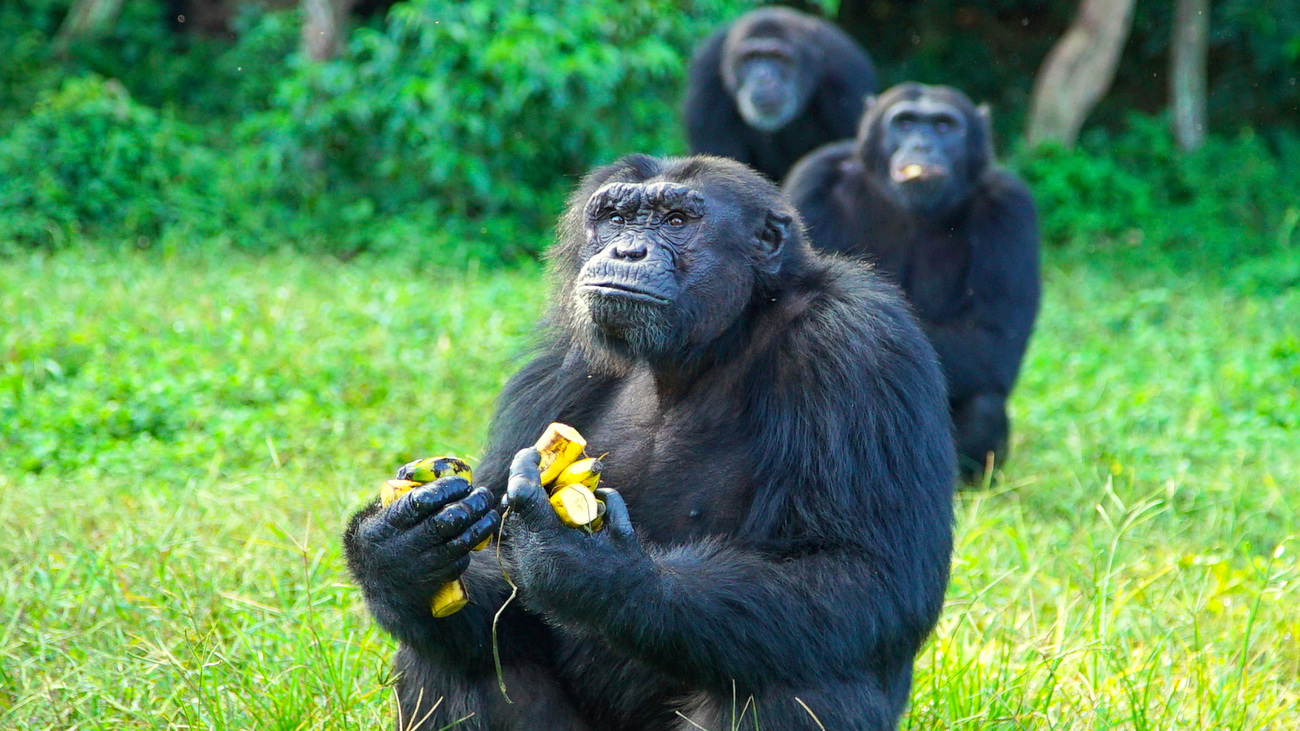
But the opposable thumb is not a uniquely human trait, and we’re not the only species that uses tools. It’s also not unique to primates like orangutans and gorillas. Some marsupials have opposable thumbs, including koalas and opossums, and other members of the animal kingdom—from giant pandas to tiny frogs—have pseudo-opposable thumbs that help them in their daily lives.
IFAW is a conservation and rescue organization dedicated to protecting animals and preserving their habitats around the world. Our work helps many of the animals listed below, including great apes, koalas, and slow lorises. Learn more about what we do on our project pages.
With that, here is all you need to know about opposable thumbs and the amazing animals that have them.
Also known as the pollex or digitus primus, the thumb differs anatomically from other digits in its range of movement. Having an opposable thumb means that the animal is able to simultaneously flex, abduct, and medially rotate their thumb. Test it with your own thumb—this means you can touch the tip of your thumb to the tips of each of your fingers.
While all apes and most Old World monkeys have opposable thumbs, there are a few other members of the animal kingdom that share this trait. Read on to learn more about these different animals that have opposable thumbs—some might surprise you!
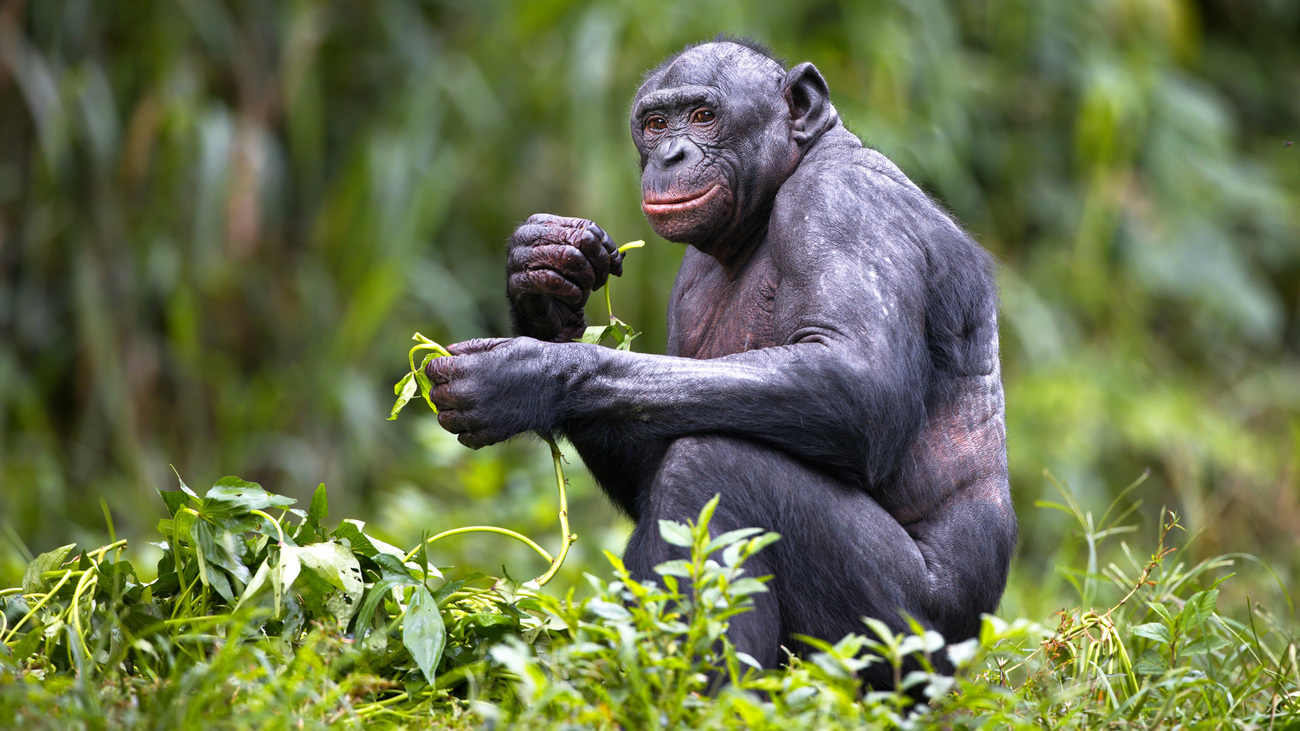
The great apes—chimpanzees, bonobos, orangutans, and gorillas—are our closest genetic relatives. Just like humans, baby great apes learn how to pick things up at a very young age. Their thumbs prove important for survival and fitting in with social groups, as they use them to swing between branches, groom each other, and use sticks as tools.
Of all apes, chimpanzees show the largest range of tool use. They use sticks to grab ants and termites out of the ground, an important part of their diet. They also pick up rocks and use them to crack nuts. Tools also play a role in grooming and communication. Bonobos, on the other hand, rarely use tools, but still employ their thumbs in moving between trees and picking up objects like food. Great apes also have opposable big toes in addition to the thumbs on their hands.
All three orangutan species and both gorilla species are critically endangered, and chimpanzees and bonobos are both classed by the IUCN as endangered. Great apes are largely threatened by deforestation, poaching, and disease. Illegal wildlife trade is also a threat to many young apes, including a baby orangutan IFAW’s partners helped rescue in 2023.
Baboons, a genus of monkeys native to Africa and the Arabian Peninsula, have opposable thumbs. Baboons have some of the best thumbs, next to humans, for manipulating small objects. Like many great apes, baboons have been observed using tools, including for capturing, extracting, and preparing food. Some baboon species have been observed using tools in acts of aggression towards one another.
The IUCN lists five baboon species as least concern and one (the Guinea baboon) as near threatened. However, baboons are often killed and intentionally poisoned by humans because they are considered pests, a form of human-wildlife conflict.
Macaques are a genus of monkeys that inhabit Asia and North Africa. Aside from humans, they are the most widespread primate genus in the world. Like their baboon cousins, macaques also have fully opposable thumbs, which give them the ability to manipulate small objects with precision.
Of the 24 macaque species assessed by the IUCN, two are critically endangered, nine are endangered, eight are vulnerable, two are near threatened, and three are listed as least concern. Human development and activity, including the building of infrastructure, logging, and fires have eroded and fragmented their habitat. Palm oil plantations are also a major threat to macaques.
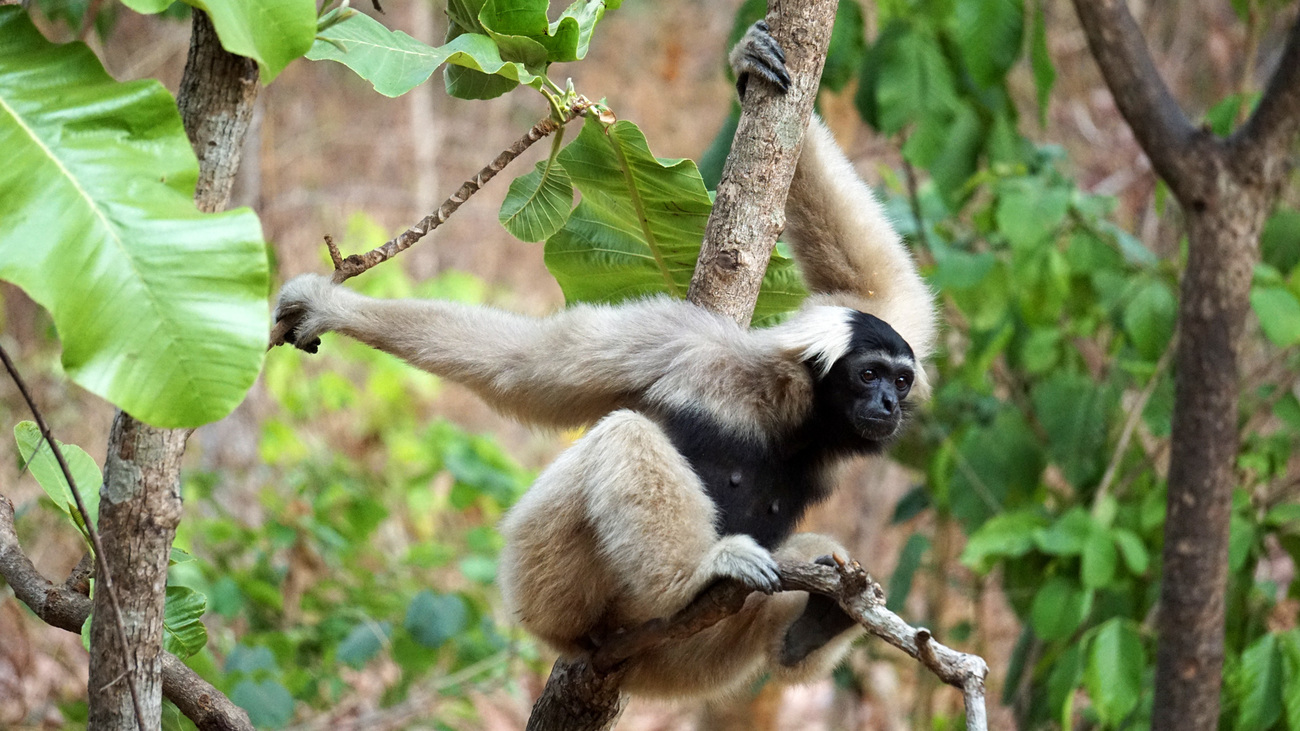
Gibbons are also known as lesser apes and are a family of primates. While their thumbs are short, their fingers are long, and they have four opposable thumbs when you include their big toes. This enables them to grasp and hold objects with both their hands and their feet. Gibbons are also known for their unique ability to walk on two feet, while raising their hands above their heads for balance. Gibbons are found in South and Southeast Asia.
Five gibbon species are classed by the IUCN as critically endangered, 14 as endangered, and one as vulnerable. They are largely threatened by habitat destruction, hunting, and illegal wildlife trade. In an effort to combat declining populations of gibbons and other species, IFAW has partnered with the Jakarta Animal Aid Network and Wildlife Trust of India to conduct an investigation into wildlife trafficking networks in Southeast Asia.
Lemurs, a type of primate, have an opposable thumb on each hand and an opposable toe on each foot. In addition to the thumb, lemurs’ hands have four long fingers. These appendages help them climb and navigate through the forest. They are strong animals, with even the tiny mouse lemur able to pull up to ten times its own body weight.
Of the around 100 lemur species, the IUCN assesses 32 as critically endangered, 45 as endangered, 24 as vulnerable, and one as near threatened. Lemurs are all native to Madagascar, where they face threats of habitat loss and degradation due to loss of forest cover.
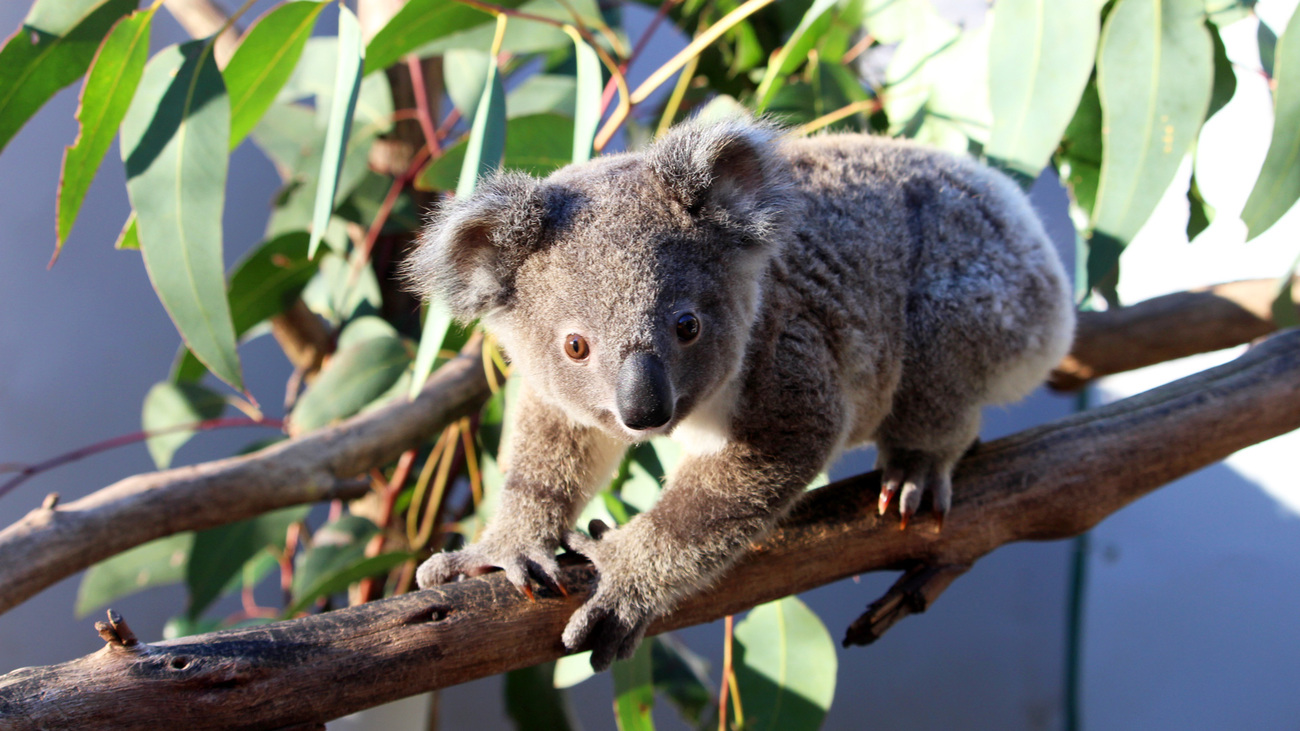
Koalas are some of the few non-primates to have evolved opposable thumbs—and instead of just having one on each hand, they have two! This is aptly suited for their arboreal lifestyle, as it allows them to get a better grip on tree trunks and branches.
In addition to having opposable thumbs, koalas have rough pads on their palms and soles and long claws, both of which support their grip. If you see a eucalyptus tree in Australia with distinctive parallel scratch marks, they’re likely from a koala’s two thumbs. Koalas are also the only animals besides primates to have unique fingerprints. The IUCN classes koalas as vulnerable due to habitat loss, hunting, disease, and climate change.
IFAW is actively engaged in efforts to conserve and protect koalas in Australia, including supporting koalas and sanctuaries impacted by bushfires. A koala’s two thumbs is how our partner Two Thumbs Wildlife Trust Sanctuary got its name. The sanctuary is a wildlife hotspot, providing homes for koalas in addition to kangaroos, wallabies, gliders, lyrebirds, and quolls, and serves as a release site for rescued and rehabilitated wildlife.
The waxy monkey tree frog, also known as the waxy monkey leaf frog, is an amphibian species found in South America. They are small, bright green, and have opposable thumbs—a unique trait for a frog. Their hands are well adapted for climbing trees and walking rather than hopping, which is how they got the ‘monkey’ part of their name.
This frog is classed by the IUCN as least concern, but their population is reportedly decreasing. It is threatened by the exotic pet trade.

Though they are not usually called ‘thumbs’, most birds have at least one opposable toe on each foot. The arrangement of birds’ toes helps them grasp branches with their feet. Some types of birds, such as birds of prey, hold food with their feet as they fly and even use their feet to eat. Parrots use their feet similarly to how we use our hands while eating. Many birds also use their feet to preen their feathers.
Opossums—the only marsupials found in North America—have opposable thumbs like their koala relatives. These thumbs are found on their back feet, not their front feet. If you see opossum footprints, you’ll notice what looks like five evenly spaced fingers on the front feet, and four fingers with a short, stubby thumb on the back feet. Opossums have nails on all these digits except for the thumb. Opossums use their back feet to grasp branches and groom themselves.
There are over 100 living opossum species, and two are listed as critically endangered, six as vulnerable, and four as near threatened by the IUCN. Sadly, many opossums end up as roadkill or are preyed on by domestic dogs.
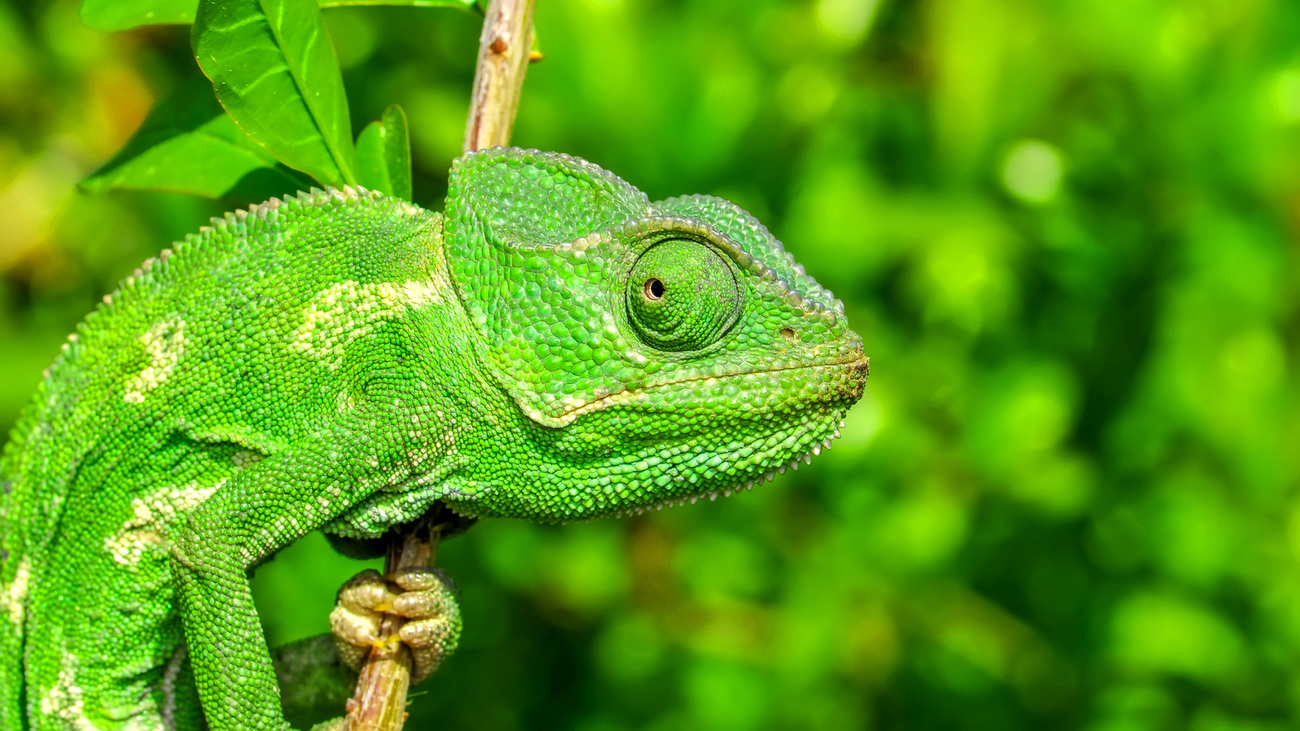
Chameleons have multiple opposable toes. They have five toes on each foot, which are grouped together in groups of two or three in opposition to each other—imagine a hand with no pinky finger, but instead a second thumb. Each toe has a sharp claw to assist chameleons with their grip while climbing trees.
Of the over 100 chameleon species, 10 are classed by the IUCN as critically endangered, 43 as endangered, 25 as vulnerable, and 37 as near threatened. Slash-and-burn agriculture, deforestation, and the exotic pet trade are all major threats to chameleons.
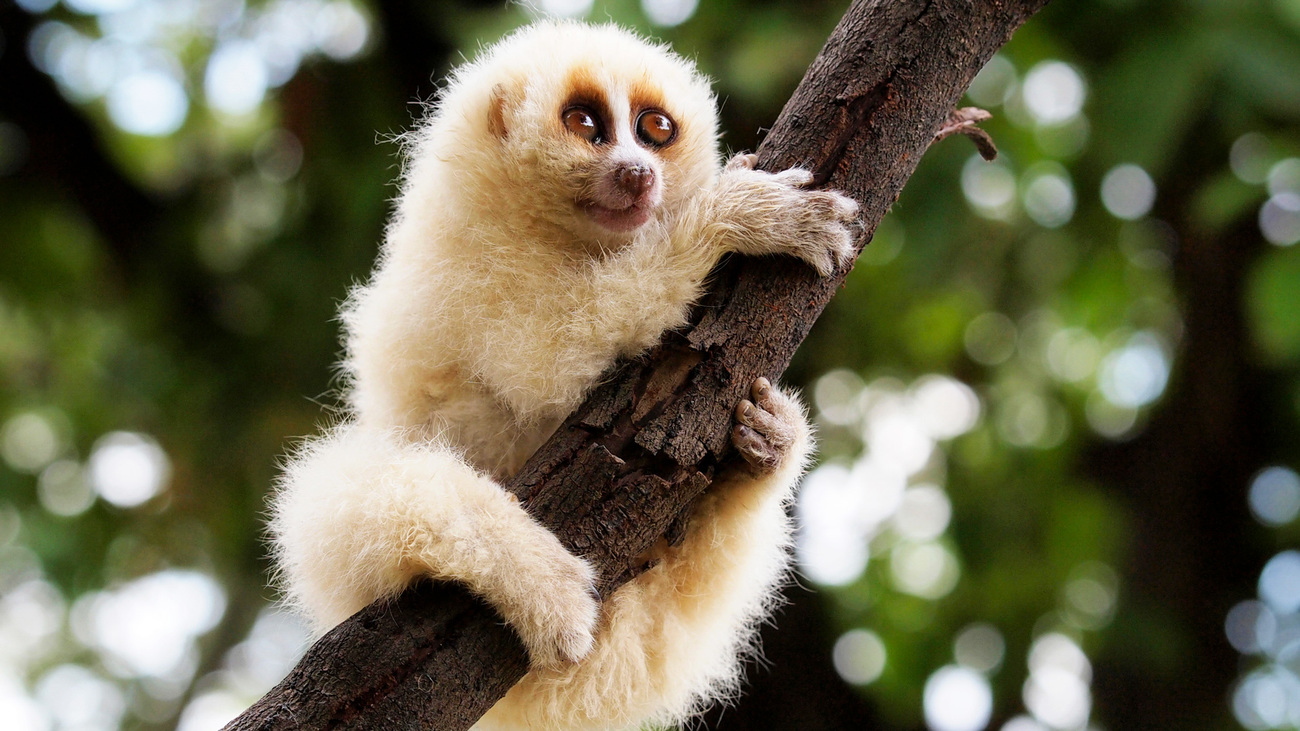
Slow lorises are small mammals and the only venomous primates. Typical of primates, they have opposable thumbs with strong hands and feet. They are good tree climbers and typically only leave the trees to defecate on the ground.
Frequent targets of the exotic pet trade, all slow loris species are critically endangered, endangered, and vulnerable.
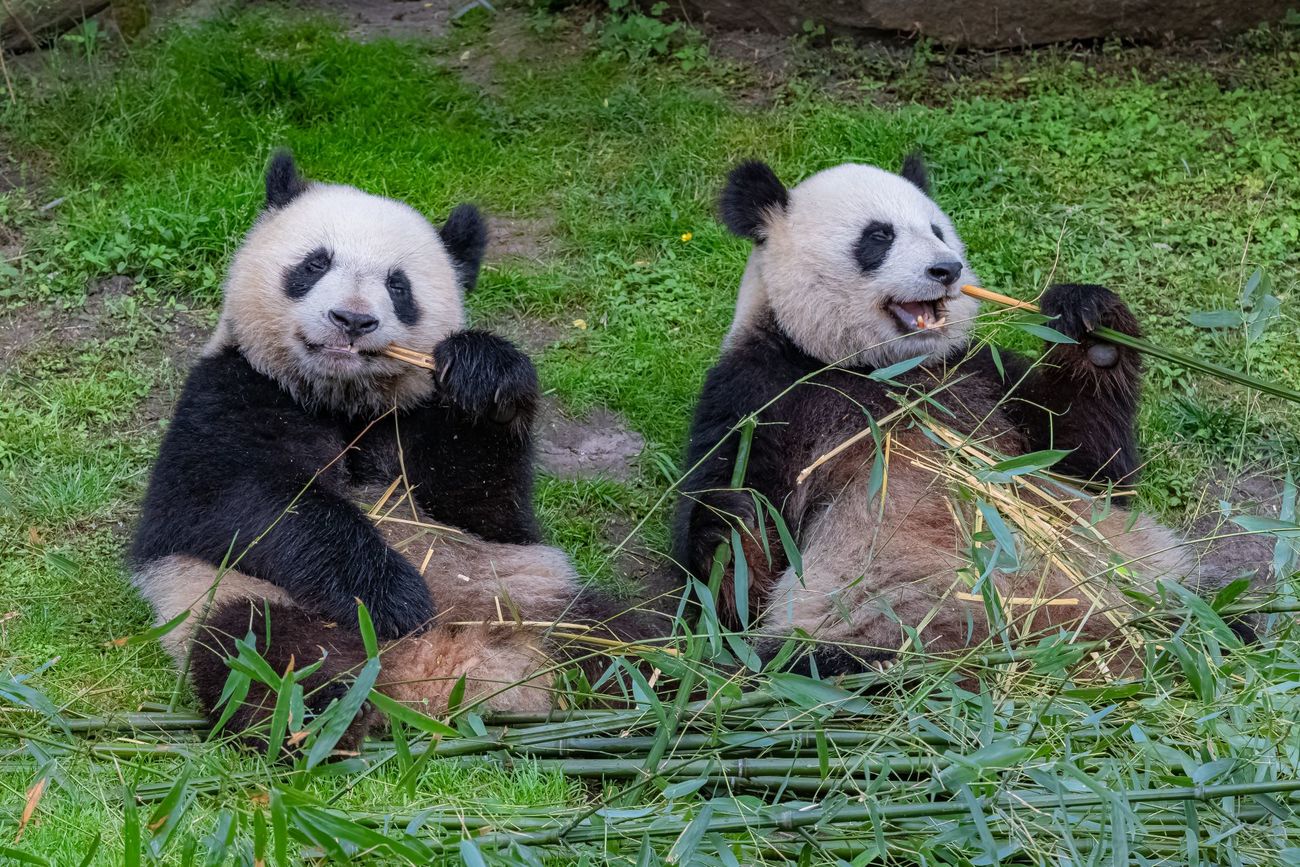
In addition to having five regular fingers, giant pandas have an enlarged wrist bone that acts as a sixth, opposable digit. This ‘thumb’ helps them hold and manipulate bamboo, their primary food source.
Giant pandas are classed by the IUCN as vulnerable. They are threatened by habitat loss, hunting, and climate change.
Want to help IFAW protect endangered and vulnerable species around the world?
every problem has a solution, every solution needs support.
The problems we face are urgent, complicated, and resistant to change. Real solutions demand creativity, hard work, and involvement from people like you.
Unfortunately, the browser you use is outdated and does not allow you to display the site correctly. Please install any of the modern browsers, for example:
Google Chrome Firefox Safari